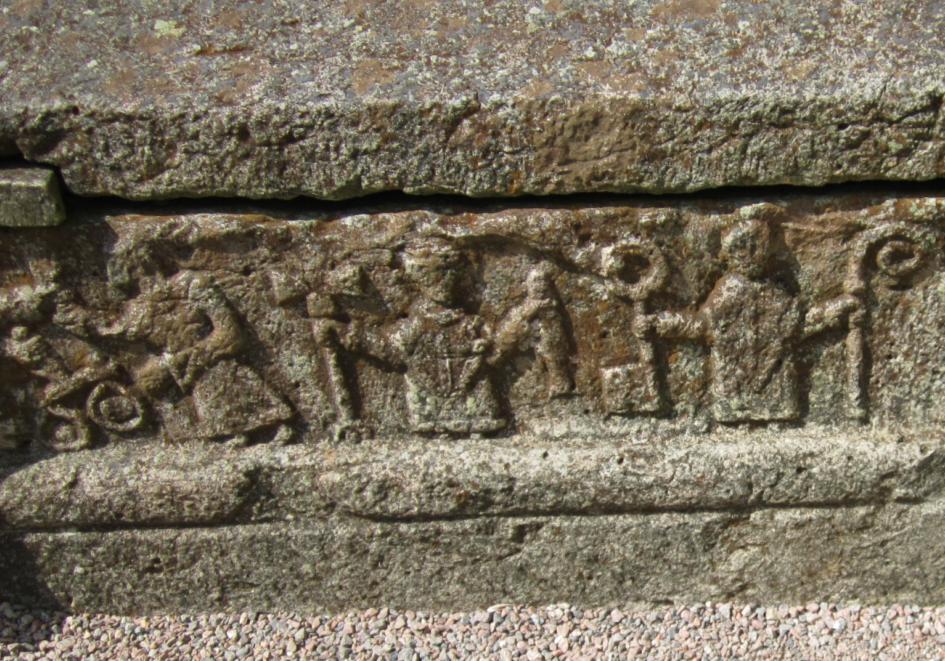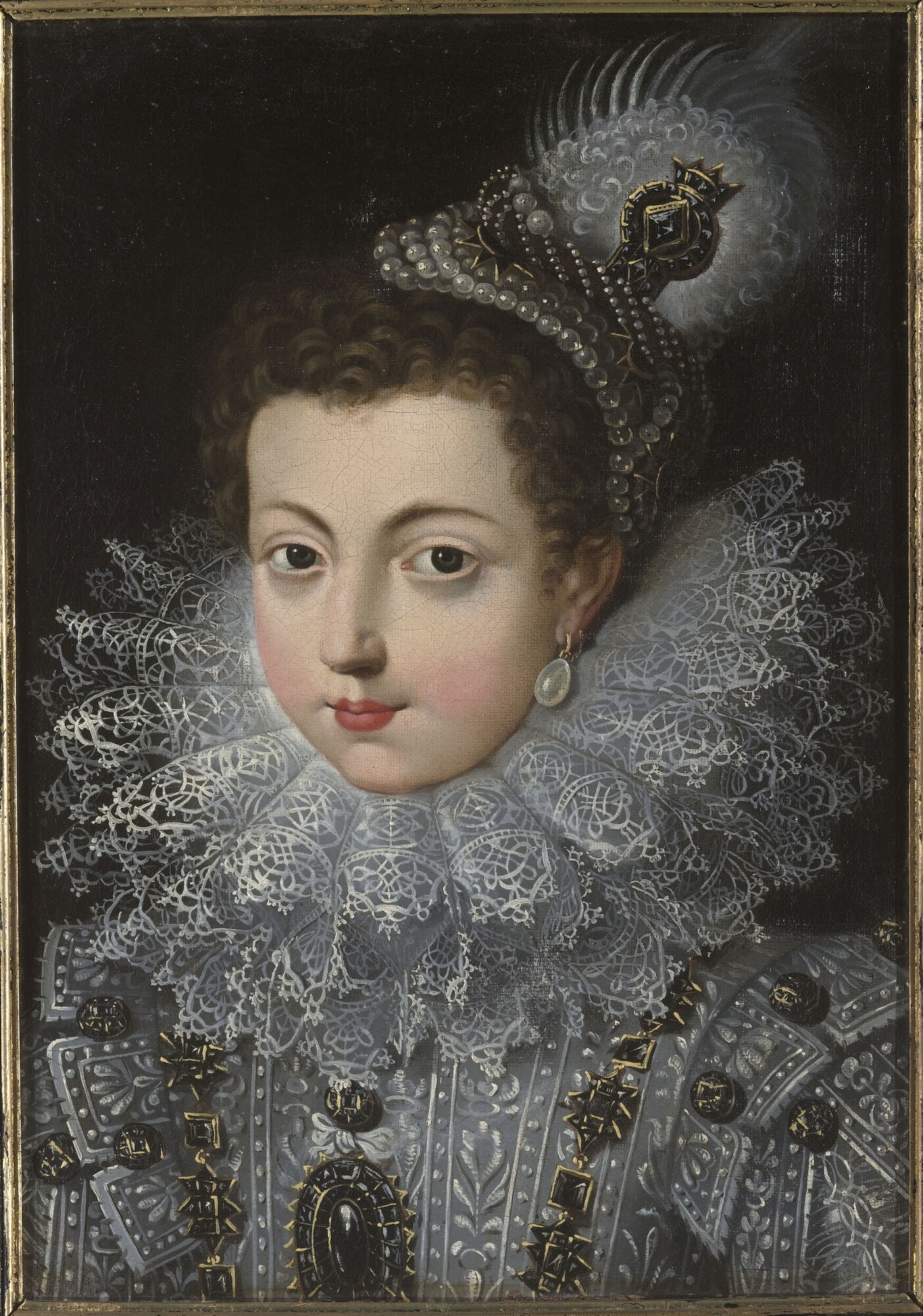|
Alfonso Enríquez De Santo Tomás
Alfonso Enríquez de Santo Tomás ((Vélez-Málaga, 9 June 1631 – Málaga, 30 July 1692) was a Catholic prelate who served as Bishop of Osma (1661-1663), Bishop of Plasencia (1664–1664) and Bishop of Malaga (1664–1692). He was an illegitimate son of King Felipe IV of Spain. Biography Born in Vélez-Málaga in 1631, he was officially the "legitimate and natural son" of José Enríquez de Guzmán y de Porres, gentleman of the King's chambers, and Constanza de Ribera y Orozco, lady-in-waiting to Queen Isabel de Borbón. The reality was very different: the child was the fruit of a love affair of King Felipe IV of Spain with the aforementioned lady. His legal father was forced to marry Constance in a hurry, for which he was rewarded by the monarch. At seventeen, the young aristocrat decided to embrace Dominican religious life and renounce his noble titles. He first became Bishop of Osma and Bishop of Plasencia, before being appointed Bishop of Malaga A bishop is an ordaine ... [...More Info...] [...Related Items...] OR: [Wikipedia] [Google] [Baidu] |
Bishop Of Osma
The Roman Catholic Diocese of Osma-Soria ( la, Oxomen(sis)–Sorian(a)) is a Latin Church ecclesiastical territory or diocese of the Catholic Church in northern Spain. It is a suffragan diocese in the ecclesiastical province of the metropolitan Archdiocese of Burgos. Its cathedral episcopal see is Catedral de Santa María de la Asunción, dedicated to the Assumption of Mary, in El Burgo de Osma. It also has a co-cathedral, Concatedral de San Pedro, dedicated to St. Peter, in Soria, and a minor basilica: Basílica de Nuestra Señora de los Miagros Miagros, in Ágreda, Soria, Castile and León, Spain. History * Established circa 600 as Diocese of Osma * Lost territory in 1077 to the Diocese of Nájera * Renamed on 9 March 1959 as Diocese of Osma-Soria, as Soria gets a co-cathedral Statistics As per 2014, it pastorally served 80,000 Catholics (85.8% of 93,291 total) on 10,287 km2 in 542 parishes and 19 missions with 128 priests (103 diocesan, 25 religious), 212 lay ... [...More Info...] [...Related Items...] OR: [Wikipedia] [Google] [Baidu] |
Bishop Of Malaga
A bishop is an ordained clergy member who is entrusted with a position of authority and oversight in a religious institution. In Christianity, bishops are normally responsible for the governance of dioceses. The role or office of bishop is called episcopacy. Organizationally, several Christian denominations utilize ecclesiastical structures that call for the position of bishops, while other denominations have dispensed with this office, seeing it as a symbol of power. Bishops have also exercised political authority. Traditionally, bishops claim apostolic succession, a direct historical lineage dating back to the original Twelve Apostles or Saint Paul. The bishops are by doctrine understood as those who possess the full priesthood given by Jesus Christ, and therefore may ordain other clergy, including other bishops. A person ordained as a deacon, priest (i.e. presbyter), and then bishop is understood to hold the fullness of the ministerial priesthood, given responsibility b ... [...More Info...] [...Related Items...] OR: [Wikipedia] [Google] [Baidu] |
17th-century Roman Catholic Bishops In Spain
The 17th century lasted from January 1, 1601 ( MDCI), to December 31, 1700 ( MDCC). It falls into the early modern period of Europe and in that continent (whose impact on the world was increasing) was characterized by the Baroque cultural movement, the latter part of the Spanish Golden Age, the Dutch Golden Age, the French '' Grand Siècle'' dominated by Louis XIV, the Scientific Revolution, the world's first public company and megacorporation known as the Dutch East India Company, and according to some historians, the General Crisis. From the mid-17th century, European politics were increasingly dominated by the Kingdom of France of Louis XIV, where royal power was solidified domestically in the civil war of the Fronde. The semi-feudal territorial French nobility was weakened and subjugated to the power of an absolute monarchy through the reinvention of the Palace of Versailles from a hunting lodge to a gilded prison, in which a greatly expanded royal court could be more easil ... [...More Info...] [...Related Items...] OR: [Wikipedia] [Google] [Baidu] |
Dominican Bishops
Dominican may refer to: * Someone or something from or related to the Dominican Republic ( , stress on the "mi"), on the island of Hispaniola in the Greater Antilles, in the Caribbean ** People of the Dominican Republic ** Demographics of the Dominican Republic ** Culture of the Dominican Republic * Someone or something from or related to the Commonwealth of Dominica ( , stress on the "ni"), an island nation in the Lesser Antilles, in the Caribbean ** People of Dominica ** Demographics of Dominica ** Culture of Dominica * Dominican Order, a Catholic religious order Schools * Dominican College (other), numerous colleges throughout the world * Dominican School of Philosophy and Theology, Berkeley, California, United States * Dominican University (Illinois), River Forest, Illinois, United States * Dominican University of California, San Rafael, California, United States * Dominican University New York Dominican University New York is a private college in Orangeburg, Ne ... [...More Info...] [...Related Items...] OR: [Wikipedia] [Google] [Baidu] |
Bishops Of Osma
A bishop is an ordained clergy member who is entrusted with a position of authority and oversight in a religious institution. In Christianity, bishops are normally responsible for the governance of dioceses. The role or office of bishop is called episcopacy. Organizationally, several Christian denominations utilize ecclesiastical structures that call for the position of bishops, while other denominations have dispensed with this office, seeing it as a symbol of power. Bishops have also exercised political authority. Traditionally, bishops claim apostolic succession, a direct historical lineage dating back to the original Twelve Apostles or Saint Paul. The bishops are by doctrine understood as those who possess the full priesthood given by Jesus Christ, and therefore may ordain other clergy, including other bishops. A person ordained as a deacon, priest (i.e. presbyter), and then bishop is understood to hold the fullness of the ministerial priesthood, given responsibility b ... [...More Info...] [...Related Items...] OR: [Wikipedia] [Google] [Baidu] |
Bishops Of Málaga
A bishop is an ordained clergy member who is entrusted with a position of authority and oversight in a religious institution. In Christianity, bishops are normally responsible for the governance of dioceses. The role or office of bishop is called episcopacy. Organizationally, several Christian denominations utilize ecclesiastical structures that call for the position of bishops, while other denominations have dispensed with this office, seeing it as a symbol of power. Bishops have also exercised political authority. Traditionally, bishops claim apostolic succession, a direct historical lineage dating back to the original Twelve Apostles or Saint Paul. The bishops are by doctrine understood as those who possess the full priesthood given by Jesus Christ, and therefore may ordain other clergy, including other bishops. A person ordained as a deacon, priest (i.e. presbyter), and then bishop is understood to hold the fullness of the ministerial priesthood, given responsibi ... [...More Info...] [...Related Items...] OR: [Wikipedia] [Google] [Baidu] |
1692 Deaths
Year 169 ( CLXIX) was a common year starting on Saturday (link will display the full calendar) of the Julian calendar. At the time, it was known as the Year of the Consulship of Senecio and Apollinaris (or, less frequently, year 922 ''Ab urbe condita''). The denomination 169 for this year has been used since the early medieval period, when the Anno Domini calendar era became the prevalent method in Europe for naming years. Events By place Roman Empire * Marcomannic Wars: Germanic tribes invade the frontiers of the Roman Empire, specifically the provinces of Raetia and Moesia. * Northern African Moors invade what is now Spain. * Marcus Aurelius becomes sole Roman Emperor upon the death of Lucius Verus. * Marcus Aurelius forces his daughter Lucilla into marriage with Claudius Pompeianus. * Galen moves back to Rome for good. China * Confucian scholars who had denounced the court eunuchs are arrested, killed or banished from the capital of Luoyang and official li ... [...More Info...] [...Related Items...] OR: [Wikipedia] [Google] [Baidu] |
1631 Births
Events January–March * January 23 – Thirty Years' War: Sweden and France sign the Treaty of Bärwalde, a military alliance in which France provides funds for the Swedish army invading northern Germany. * February 5 – Puritan leader Roger Williams arrives in Boston. * February 16 – The Reval Gymnasium is founded in Tallinn, Estonia, by Swedish king Gustavus II Adolphus. * February 20 – A fire breaks out in Westminster Hall, but is put out before it can cause serious destruction."Fires, Great", in ''The Insurance Cyclopeadia: Being an Historical Treasury of Events and Circumstances Connected with the Origin and Progress of Insurance'', Cornelius Walford, ed. (C. and E. Layton, 1876) p29 * March 7 – Ambrósio I Nimi a Nkanga, the ruler of the Kingdom of Kongo (in what is now Angola) dies after a reign of five years. * March 10 – Al Walid ben Zidan becomes the new Sultan of Morocco upon the death of Abu Marwan Abd al-M ... [...More Info...] [...Related Items...] OR: [Wikipedia] [Google] [Baidu] |
Elisabeth Of France (1602–1644)
Elisabeth of France or Isabella of Bourbon (22 November 1602 – 6 October 1644) was Queen of Spain from 1621 to her death and Queen of Portugal from 1621 to 1640, as the first spouse of King Philip IV & III. She served as regent of Spain during the Catalan Revolt in 1640-42 and 1643–44.Diccionario Biográfico. Real Academia de la Historia ''Isabel de Borbón'' Life Childhood  Elisabeth, ''Madame Royale'', was born at the
Elisabeth, ''Madame Royale'', was born at the [...More Info...] [...Related Items...] OR: [Wikipedia] [Google] [Baidu] |
Felipe IV Of Spain
Philip IV ( es, Felipe, pt, Filipe; 8 April 160517 September 1665), also called the Planet King (Spanish: ''Rey Planeta''), was King of Spain from 1621 to his death and (as Philip III) King of Portugal from 1621 to 1640. Philip is remembered for his patronage of the arts, including such artists as Diego Velázquez, and his rule over Spain during the Thirty Years' War. By the time of his death, the Spanish Empire had reached approximately 12.2 million square kilometers (4.7 million square miles) in area but in other aspects was in decline, a process to which Philip contributed with his inability to achieve successful domestic and military reform. Personal life Philip IV was born in the Royal Palace of Valladolid, and was the eldest son of Philip III and his wife, Margaret of Austria. In 1615, at the age of 10, Philip was married to 13-year-old Elisabeth of France. Although the relationship does not appear to have been close, some have suggested that Olivares, his ... [...More Info...] [...Related Items...] OR: [Wikipedia] [Google] [Baidu] |
Bishop Of Plasencia
The Roman Catholic Diocese of Plasencia ( la, Placentina in Hispania) is a suffragan Latin diocese in the Ecclesiastical province of the Metropolitan Archbishop of Mérida-Badajoz, in Extremadura, western Spain."Diocese of Plasencia" '' Catholic-Hierarchy.org''. David M. Cheney. Retrieved February 29, 2016"Diocese of Plasencia" ''GCatholic.org''. Gabriel Chow. Retrieved February 29, 2016 Its episcopal see is [...More Info...] [...Related Items...] OR: [Wikipedia] [Google] [Baidu] |






